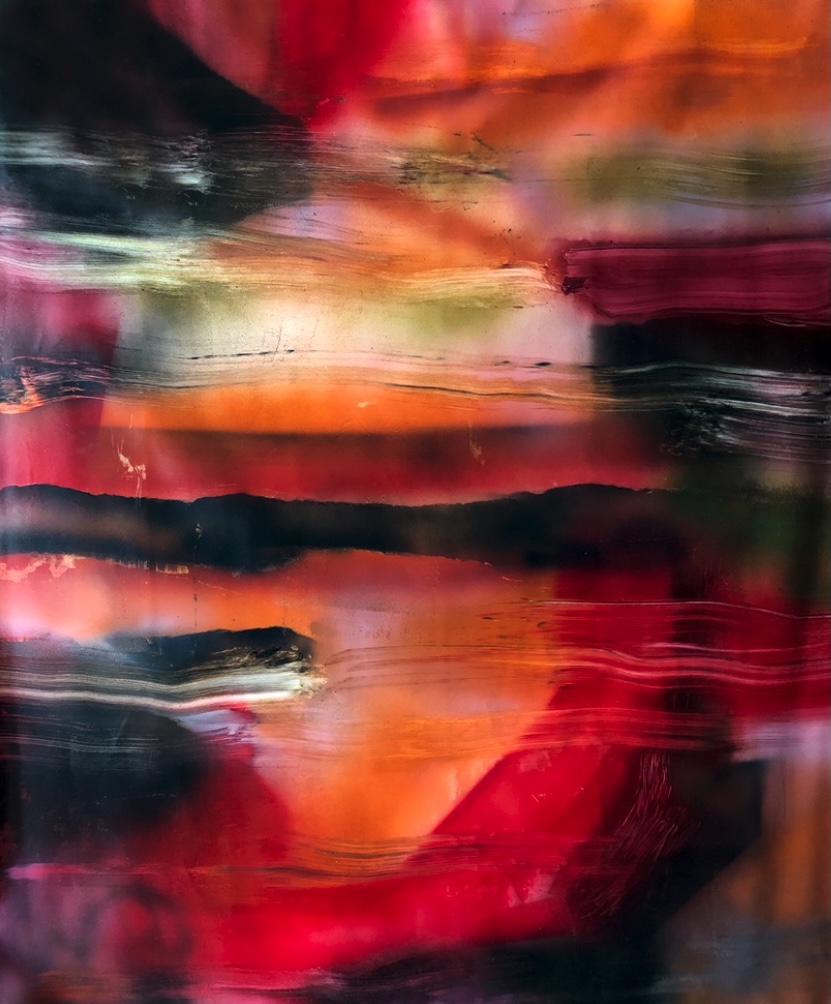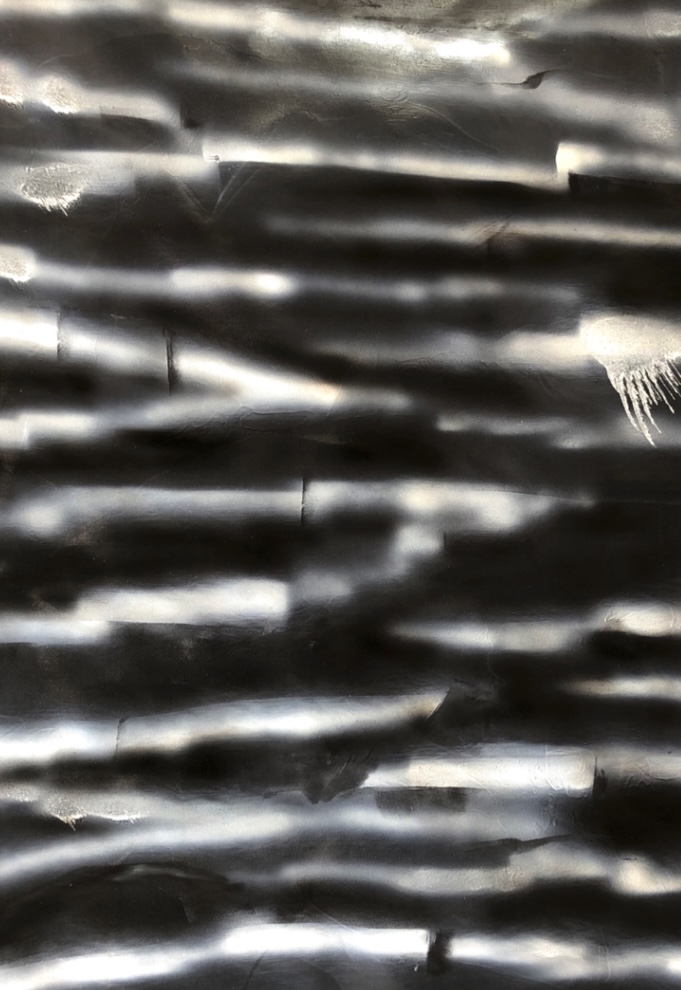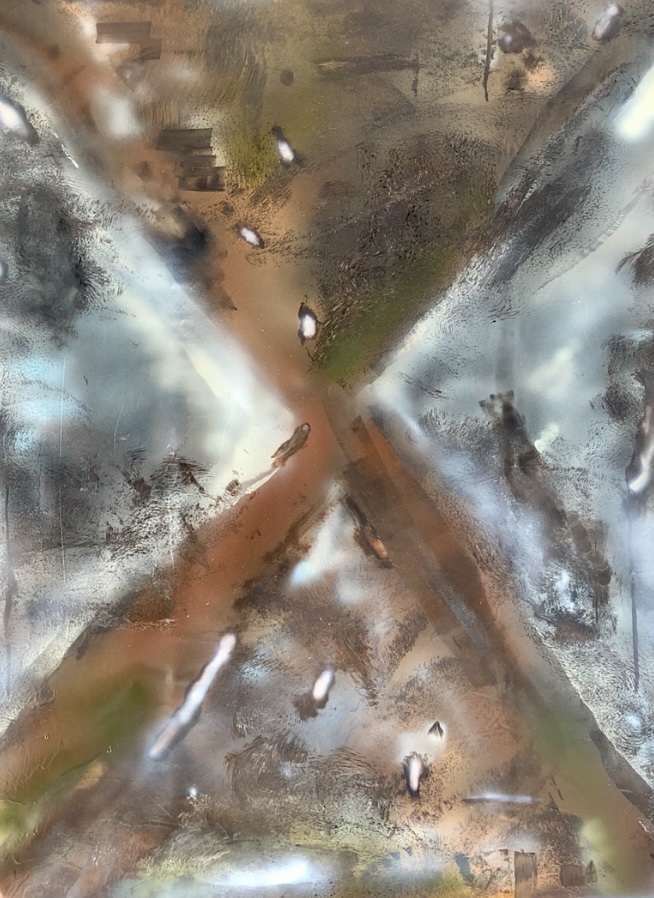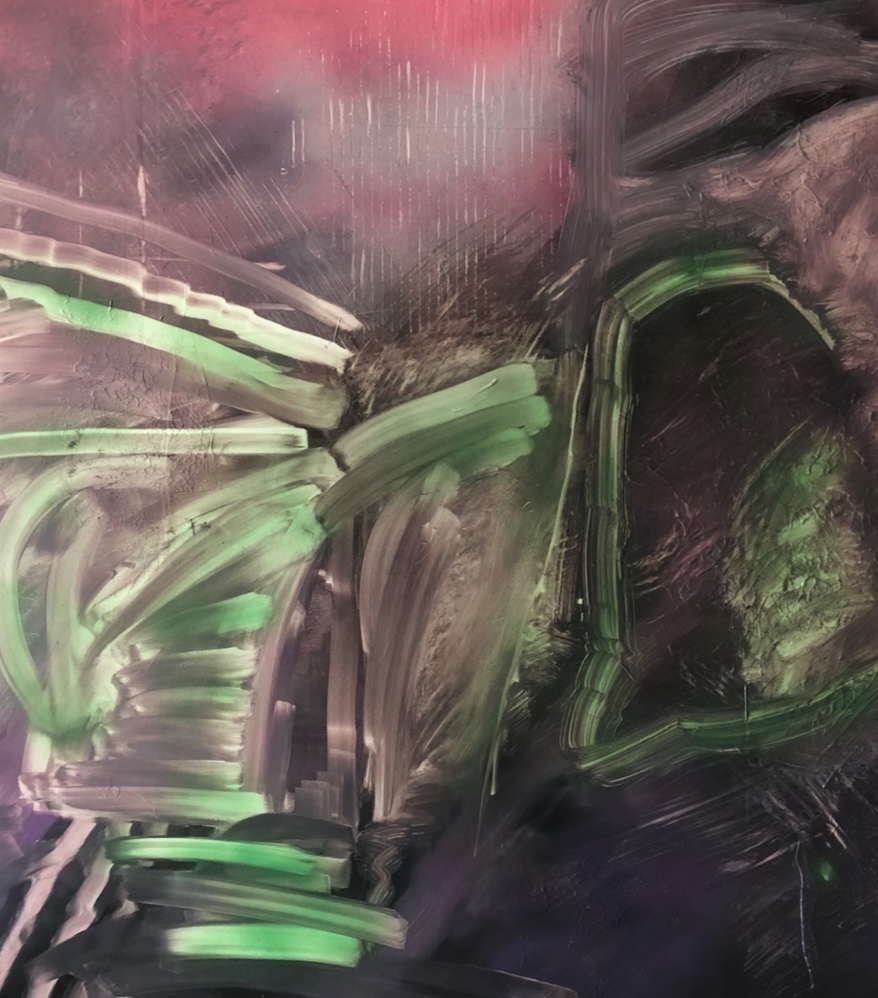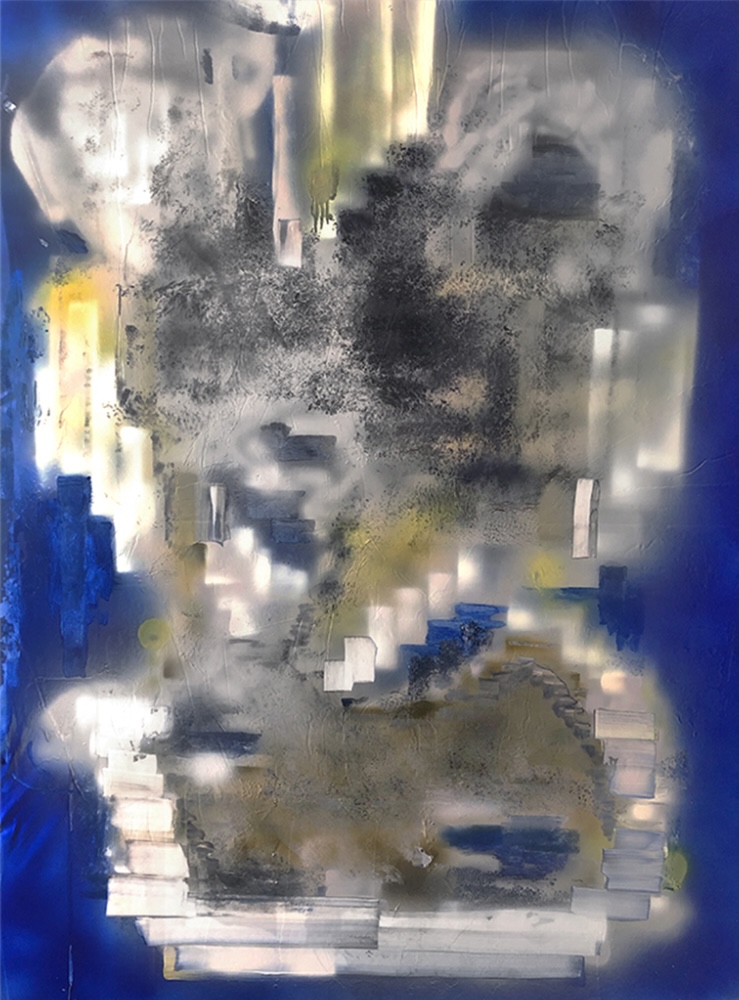How do digital tools and flat screens
affect the way we engage with the
medium of painting? The Deep
Fugazis series continues to explore
recurring themes of previous bodies of
work, such as the relationship
between hand-painted and digitally-
created mark-making. The paintings
also address the aesthetics of
computer-generated images,
including imagery created by AI, deep
learning technology.
To reflect this interest in the
mechanical and technological, the
surfaces of the paintings are utterly
smooth, working against conventional
painting textures such as impasto
application of paint or canvas fabrics.
The sprayed lines are repetitive,
uniform and blurry with areas of
amorphous clouds of color. Each is a
physical re-enactment of the
frictionless experience of digital
drawing, which many of us
experience through our table,
smartphone touch screens.
Without a focal point to anchor the
image, these paintings work as
adapted color fields, resisting clear
identification. The minimal palette of
dark colors reinforces this opacity.
Abstract patterns, blocks of color and
scattered marks are ordered into an
intuitive framework, paint is
scrambled and reworked into
correlating yet distinct designs.
The process of making each work also
follows the ‘on the fly’ motion of AI
deep learning tools, where images are
automatically generated, gradually in
real-time, starting from blurry
monochromes to more refined, yet
formulaic, compositions.
The paintings of the series play with
an insubstantial and decorative
quality, having distinctive designs yet
remaining informal. They seek to find
equilibrium between distinguishing,
idiosyncratic details and generic feel.
This aim is a dialogue with the
reassuring air of artificially generated
imagery, based on the blending of
(learning from) many other images. In
itself the birth of AI imagery is a
dedication to all the hand-created
imagery made before, a reflection of
forerunning culture, but remains, in a
way, plagued by shallowness and
ultimate inauthenticity.



